2020 delivered some absolute devastations in the real world. Meanwhile, a lot of change-ups have also been brewing behind the scenes of A Place to Hang Your Cape. But we don’t ever slow down. We have covered some very interesting pieces of genuine heart and hard work from indie creators this year. And this list is a labor of love to all of them. Twenty is not enough to showcase all the wonderful comics we’ve encountered, and the varying stories we’ve read. And while we hold no authority to dictate what in fact are the best indie comics of this year – because this is an industry that keeps on giving, and every second of everyday there’s someone else out there creating something new – we hope that this gives you a glimpse of all the amazing content waiting for you to discover.
Barking
Lucy Sullivan’s debut graphic novel is less of an exploration of mental health’s grim underbelly. It’s more of an engrossing sequential torture, one that you can’t tear your eyes from. Blood in its eyes and empathy in its heart, Barking casts a snarling stare at the broken-down systems that purport to offer support for those with mental difficulties. Once Barking grips you, it never lets you go. Sullivan’s artistic style is razor-sharp; both in how violent it is and how accurately it portrays its characters and scenery. This is undeniably one of the fiercest comics we’ve ever had the pleasure of reviewing.
Letters From Midia

Puzzle pieces coming together with lessons learned is what Boluwatife Oriowo achieves with Letters from Midia. Enchanting and morbid, the seldom use of dialogue strikes as the graphic novel’s most fascinating feat; it frames the storyline and the passage of time so well with the use of one single character. The events unfold through a series of letters, with a blend of exposition, colors, and art. These things collaborate seamlessly to deliver nuance to the story. It also treads some really disturbing topics, and handles them with grace and artistic promise. Letters From Midia is truly one of the most well-rounded comics we have ever come across.
Quarantine Comix

As lockdown conditions took hold of the UK earlier this year, Rachael Smith also felt compelled to document her daily life as it rapidly became affected by the pandemic. Quarantine Comix is drawn and written in the offbeat style of her stirringly good mental health collections: Wired Up Wrong and Stand In Your Power. It is down-to-earth, hilarious, heartfelt, and sometimes quite beautiful. A physical collection is forthcoming. But Smith continues to semi-regularly publish new installments online; a delivery amplified with her ability to brighten up your timeline.
Breakwater

Breakwater by Katriona Chapman is quiet and charming. It’s a comic that enjoys delicate simplicities and mundanities. The monochrome palette and chalky strokes of art journeys the trials and joys of adult life. It’s very much filled with your everyday regular scenery; of industry jobs, cheap drinks, work friends, and dreams deferred. A slice of life with its own sets of struggle, the characters stick with you through their varying experiences. Each of their stories, so firmly grounded in reality, endears readers and leaves them with hollow sentiments and bitter regrets. In the crazy whirl of 2020, the recluse of normalcy this piece offers is one very much needed for many of us.
The Junction
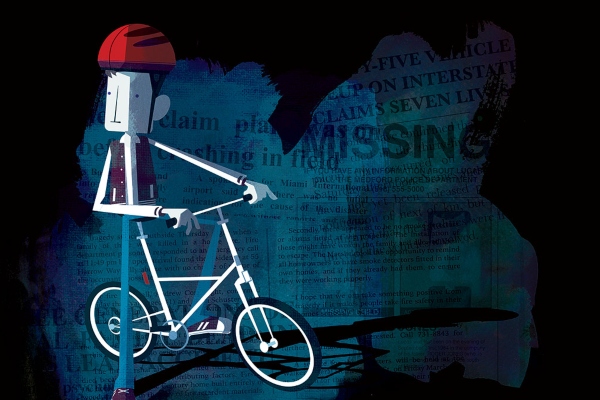
2020 has continued to prove to be another superb year for debut comics. Norm Konyu’s The Junction is just one of them. The Junction explores grief, identity, and memory in a narratively heartfelt and visually arresting manner. Lucas’ story of returning home 12 years after he disappeared, only to have not aged a day, hooks you in completely. Konyu’s distinct artistic style is a cinematic approach to peering into another world; the comic glides through its themes with a welcoming sense of unease as the story slowly reveals itself. A sublime piece of sequential work.
Mr. Butterchips: A Collection Of Cantankerous Commentary

Sly and charming, Alex Schumacher’s Mr. Butterchips: A Collection of Cantankerous Commentary is an absolute adventure. When outcries of “don’t make everything about politics” or “it’s supposed to be fun, not political” overwhelms, a collection of strips like Mr. Butterchips once again proves that entertainment and politics don’t have to be mutually exclusive of each other. Despite being a compilation of monthly installments, the comic overall remains coherent and consistent; marveling in its satirical delight while still maintaining critical of relevant sociopolitical policies and structures. It’s that delicate balance, along with its outlandishly deadpan delivery, that makes it such an interesting read. And it helps that the art, while stylistic, is simple enough not to completely overpower the writing.
No One’s Rose

It’s always wary for a piece of media to define itself as an entirely new genre. Often times, this can be a sign of misplaced egotism. But No One’s Rose’s proclaims of being ‘solar punk’ feels entirely justified. This miniseries from Vault Comics charges through youthful angst, climate crisis, social revolutions, and fraught dystopias in an intoxicating package. Furious in its story, yet well-paced in its execution. Zac Thomson, Emily Thorn, Alberto Alburquerque, Raul Angulo and Hassan Otsmane-Elhaou slam together a comic whose world is chaotically vibrant; a story charged for maximum emotional impact.
RAZE

RAZE by Claire Spiller is a monochromatic poem. Subtle and simple, it carefully frames its morals and teachings through a single spark that grows. Filled with literary conceits and small traces of warmth, it taps into humanity’s innermost chaos. It highlights concepts of God, stars, nature and greed through the key presence of bright yellow. The panel structure brings attention to the various details in the artwork. This creates layers upon layers of visual metaphors, enhanced by the accompanying text. The varying shades of black, grey and white have their own purpose, and tell their own story. And it all comes together, exposing the honest truth of human’s relationship with God and nature.
Canopus
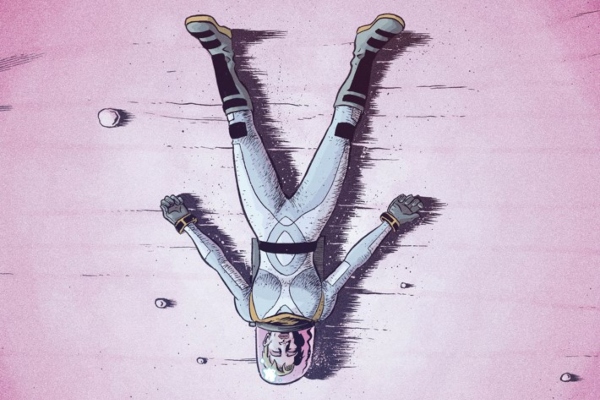
David Chisholm’s four-issue sci-fi mindbender from Scout Comics grabs the eye with every turn of the page. It’s disorientating, but incredibly slick in doing so. It grapples in dense themes whilst never losing focus between the heavy story-telling and spellbindingly vigorous art and colors. Astronaut Helen’s amnesiac awakening on a surreal alien world triggers a bizarre set of events into motion, climaxing in a finale that permanently keeps you guessing. Chisholm’s imaginative art and story-telling lock together in a rewarding package that exhausts you into excitement with each issue.
What We Don’t Talk About

A beautifully drawn and colored exploration of subtle, passive-aggressive racism and prejudices. Charlot Kristensen crafts a sumptuous world for her introspective story to take place in. The bright warmth that radiates off of her pages communicate an optimism that’s hugely at odds with the downbeat story; a clash of perspectives that makes for a capturing read. Kristensen’s comic touches on class, gender, and generational gaps. It creates a quietly powerful and ultimately affirming approach to engaging with those of a prejudiced frame of mind.
Repulsive Attraction

Repulsive Attraction practically vomits up the neon-baked colors it packs into its comically decadent strips. Quite a suitable reaction, given the comic’s gleeful disdain for capitalism in all its forms. Patrick Steptoe’s debut for Danish small press Backyard Barons consists of numerous short comics. They provide a thoroughly entertaining romp through the gluttonous personality of humanity. The sheer absurdity of Repulsive Attraction gains a darker flavor when it’s all easily rooted in very real mass corporate control. The grotesque humor hits hard and fast. Vomit, faecal matter and urine never looked so good.
Medicine: A Graphic History
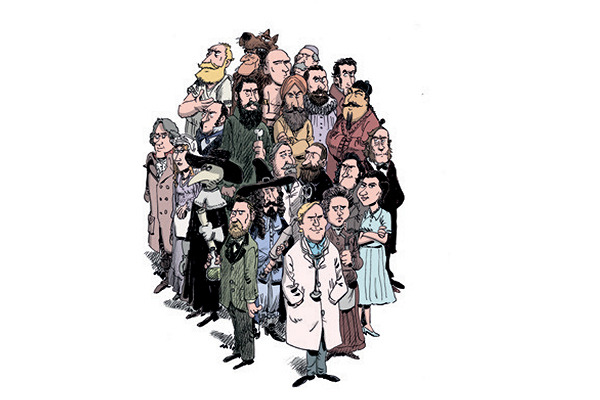
Bursting with content and plenty of fun facts, Medicine: A Graphic History is written by Jean-Noël Fabiani. It is perhaps one of the most extensive historical recounts in graphic novel format one might ever encounter. But it’s not just a long book with pictures and useless medical jargon. Each chapter offers new and interesting discoveries, simplifying technicalities by coupling it with more quirky pieces of information. This refreshes every chapter read, and every brutal dump of historical lessons. The art doesn’t falter, keeping things interesting with a wide array of character designs, each fit for the era and time period. SelfMadeHero’s Medicine is nothing short of an informative time travel with lots of fun to offer.
Interim

Allissa Chan’s Interim is a stately, poetic exploration of freedom and belonging. It has a wonderfully creative construction in its panels and artwork which makes it an absorbing, soulful read. When a star that manifests into a person falls into a seemingly desolate, metamorphic city, a strange bid for escape ensues. Chan uses the comic’s premise to craft some unique perspectives through structure. The minimalist colors and trim artwork ensure that Chan never draws attention to her elegant layouts. This adds to the otherworldly charm of the comic. Another absolute gem from ShortBox.
Mary Shelley’s Frankenstein

Lyndon White’s latest concertina comic is an adaptation of Mary Shelley’s Frankenstein. The concertina shape of White’s comics are an old and unusual form that White preserves. When most of the comic is silent, more weight relies on the arresting, beautiful art. The concertina comics provide a more subjective, personal meditation on the core elements of each story. White nevertheless returns to the source text, eschewing contemporary interpretations, to create bold reinventions of these familiar narratives.
Commander Rao

Bursting with life and color, Fell Hound and Letter Squid’s Commander Rao compacts a two-hour cinematic epic into a rip-roaring one-shot. It’s Kinetic yet morose in equal measure. The graphic novel kicks itself into life as an entertaining showcase for Hound’s lyrical approach to composing action sequences. But it ends on an unexpectedly downcast mood. She uses her nimble, uncluttered line art to full effect, drenching in hot, angry colors. But it’s when the anti-war themes rear their head towards the end of the comic that Commander Rao hits hardest, saving its most powerful punch until the end.
Killtopia

On its surface, Killtopia is a cyberpunk battle-royale; a dystopic version of Tokyo overrun by competing bounty hunters in increasingly brazen mech suits and neo-get-ups. Killtopia is a no-holds-barred trip through an indulgent and violent version of the future; one that satisfies all your cyberpunk desires. The wild comic is nevertheless bolstered by likeable heroes. These characters anchor the series and their stories stay the priority of each book. When the action does get insane, the sequences are contained and written with a clear direction that propels their stories forward. The art is tremendous; these moments of action are alacritous and excitingly laid out. The world-building of this neo-Tokyo is fully-realized; a composite of cyberpunk genre influences with more modern aspects from today.
Quarantine
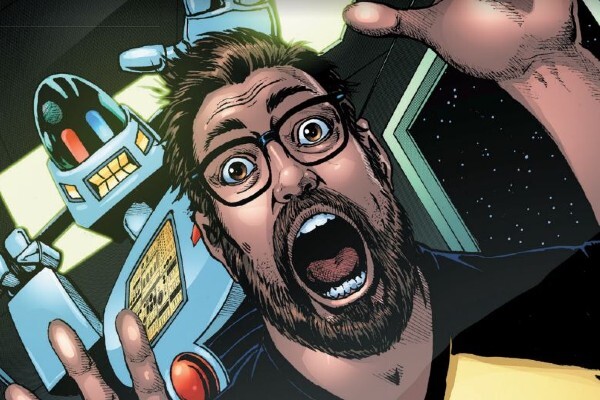
Another creator alongside Smith who felt compelled to create sequential work in the wake of the pandemic is Frank At Home On The Farm writer Jordan Thomas. Trading in that comic’s horror chops for amusingly bizarre, 2000 AD-style sci-fi, Thomas brings together a host of indie comic superstars to draw this energetic and comical one-shot. Each one of Quarantine’s pages is drawn and colored by a different artist. This lends the comic a surreal atmosphere. This is juxtaposed against a story that’s already self-aware in aping the claustrophobic attitudes we’ve all been experiencing throughout lockdown.
Wishful Thinking

A genie running a law firm immediately crackles with storytelling possibilities. Wishful Thinking hits the ground running with these; meeting expectations for such an original premise, and teasing possibilities for an ongoing book. Jim the Genie is a wish advisor, exposing crooked loopholes in wishes that would have your regular djinn rubbing their hands scheming. It’s like the backlot of a Disney park with a good serving of a scummy Better Call Saul legal drama. Wishful Thinking is a fun and cheeky comic in every way.
Ex.Mag #1: Full Metal Dreamland

After a successful Kickstarter campaign to fund its first three issues, the first installment of European small press Peow Studios’ Ex.Mag is an anthology that truly embraces what all anthologies should do – be daring. Each issue of Ex.Mag carries its own unique theme; #1 is cyberpunk. Ex.Mag #1: Full Metal Dreamland fires off in fresh thematic areas instead of succumbing to tired tropes so closely associated with the genre. With a diverse array of talent, stories dabbling in consumerism, relationships, memory and digital worlds, and artwork that’s dynamic and eclectic, Peow’s ongoing anthology is off to a fantastic start.
Nicnevin And The Bloody Queen
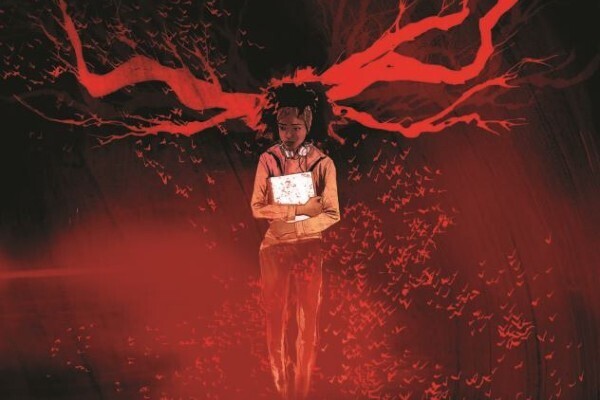
On one level, Nicnevin and the Bloody Queen works as a spooky folk horror comic set in familiar rural England. And that comic would make this list. Helen Mullan’s slowly-tightening horror works perfectly in tandem with the art from Dom Reardon, Matthew Dow Smith and colorist Lee Loughridge. It has good pacing and the art has a consistently good hand for evocative, affecting imagery. But as well as being an excellent witch story, Nicnevin also reflects on the legacy of this horror. The comic is haunted with dreams and prophecies that juxtapose Nicnevin’s trials with those of years before her.
Have you read any of these comics this year, or do you have your own favorites? Let us know in the comments section below or send us a Tweet!


